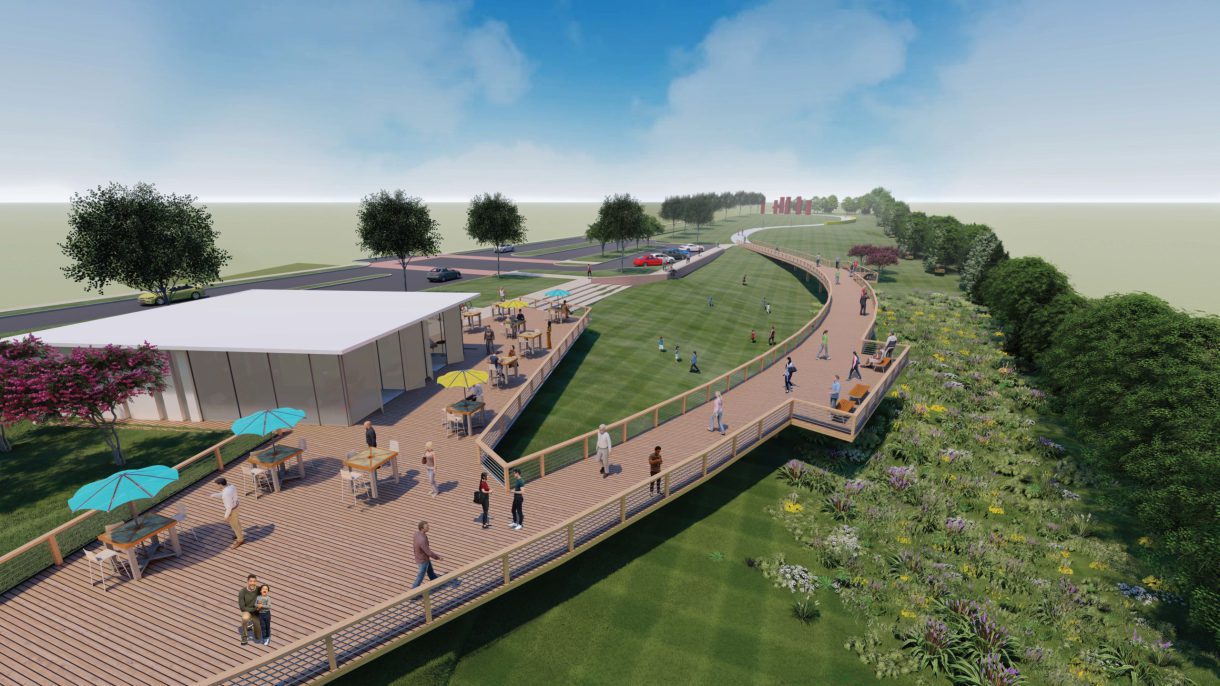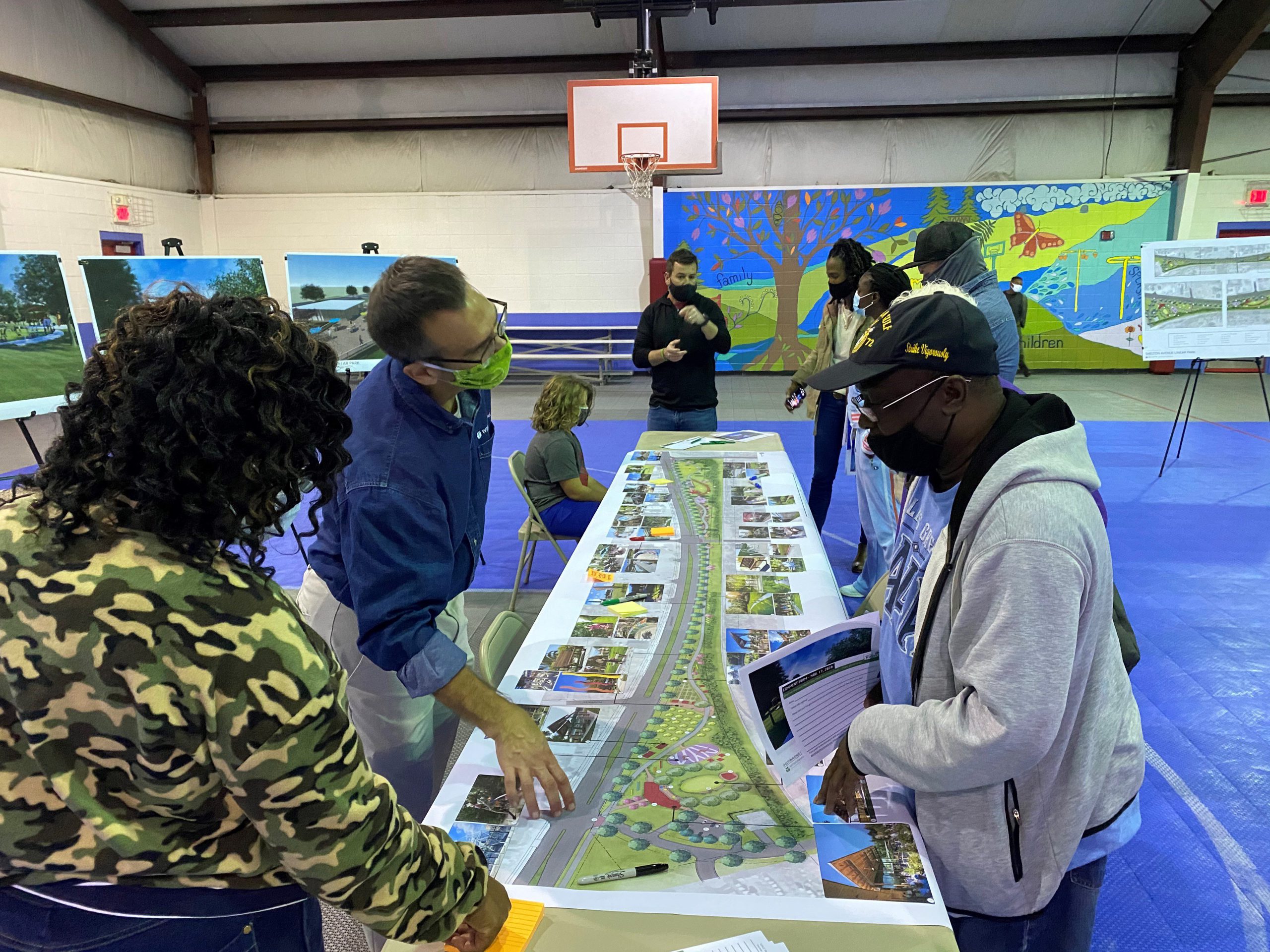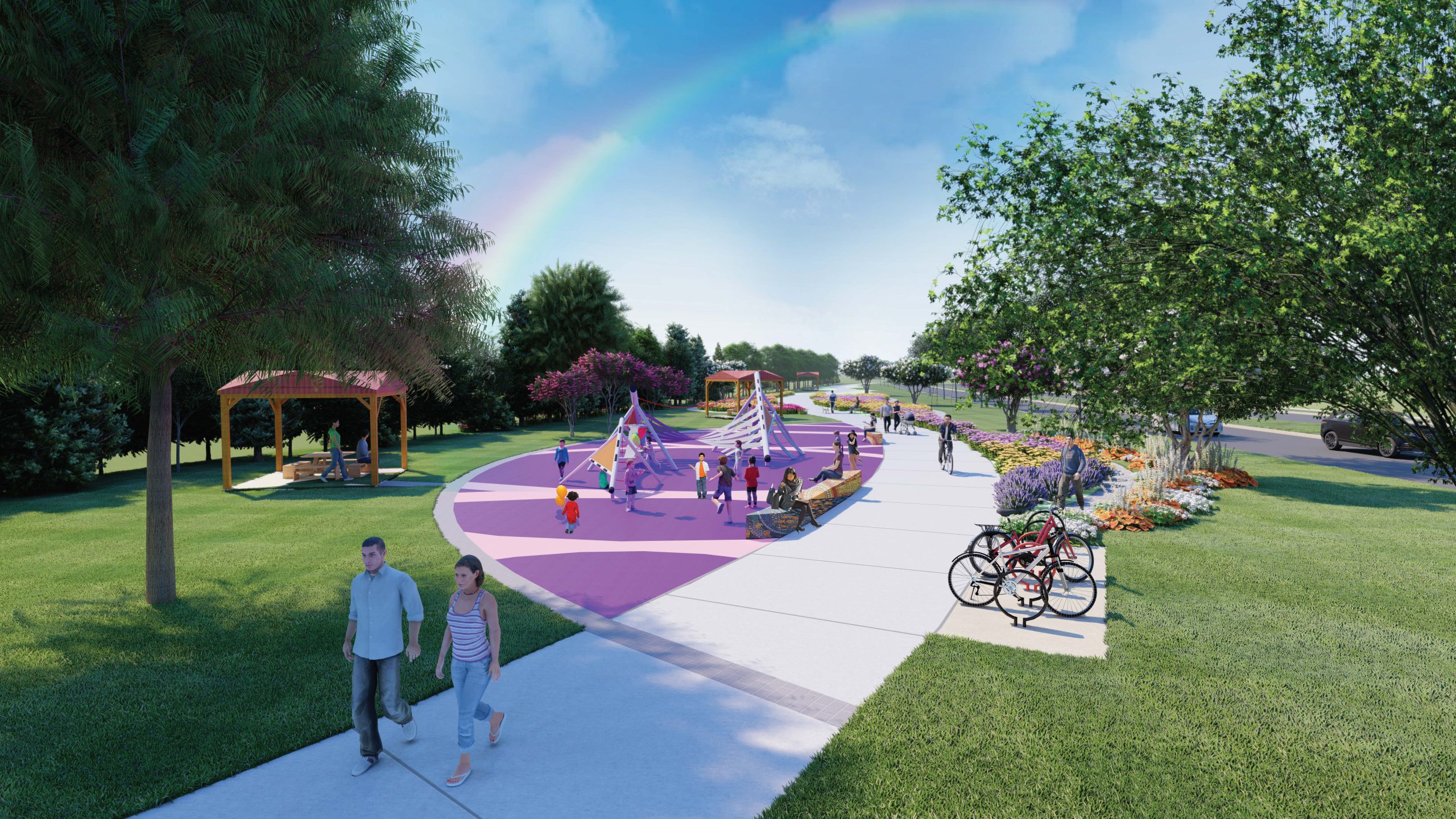
A new linear park and multi-use path along Shelton Avenue promise to create a vibrant gateway into the City of Statesville, North Carolina.
The City hopes these facilities will provide both recreational opportunities and alternative modes of transportation while sparking economic development for previously under-served minority populations along the corridor.
The roughly one-mile-long project site is located on the south side of the city along the east side of NC 115/US 21 South. This highway serves as one of the City’s main thoroughfares and leads directly into the downtown core. Along with a Norfolk Southern Railroad track, the highway also creates rigid boundaries for the site, limiting the available redevelopment options.
The park and path project were originally identified in the City of Statesville’s Downtown & NC 115 Streetscape/Land Use Master Plan prepared in 2009. In the decade that followed, interest in the project persisted, but other priorities and a lack of funding conspired to keep it just out of reach.
In 2017, the City selected the multidisciplinary team led by WithersRavenel to prepare a site-specific master plan for the park and path. Proposed park elements include event space, outdoor cafés and picnic shelters, community and ornamental gardens, playgrounds, and public art installations.
Site constraints have posed the biggest challenge to the project. In addition to the long, narrow profile and the adjacent highway and railroad rights-of-way, the corridor is dotted with vacant and dilapidated buildings. A lack of investment in this historically black and Latino part of the city has caused many businesses to move, and those that have remained tend to be overshadowed by the neighboring properties.
While it might have been tempting to some to suggest leveling the site and starting fresh, it was very important to the City and WithersRavenel to honor the work of the small business owners who have continued to support the surrounding neighborhoods despite the lack of reinvestment by the City.

A vision for the future
Our planners held public meetings in the community to better understand neighborhood challenges and what residents wanted to see. The overwhelming answer was more community spaces: places where people can safely gather, exercise, play, and celebrate together. Places where people can connect with one another and their community.
Based on this feedback, and after consultation with WithersRavenel, the City elected to remove 23 light industrial properties from the site to make room for the project. Of these properties, one third are vacant or abandoned, another third are undeveloped, and the remaining third are occupied.
The City will purchase the occupied properties at the market rate, and business owners are being encouraged to move, with help from the City, to new locations in the same neighborhood where they will be better positioned to thrive. As the park and multi-use trail develop, the increased foot traffic will drive patrons to nearby shops and service providers.
WithersRavenel is also looking for opportunities to incorporate these businesses into the future operations of the park. For example, our team is talking to a local restaurant owner about becoming a vendor in the park’s planned café.
The overall reception to these proposed changes has been positive. The community and the City recognize the potential of the park as an economic redevelopment tool. South Statesville is poised to become a gateway to the city, and this project will set the tone for future revitalization efforts.
At this time, WithersRavenel has submitted schematic designs to the City for review and is awaiting comments. The next phase of work will involve discussions with Norfolk Southern Railroad about railroad easements. The North Carolina Department of Transportation and other project partners are seeking funding for construction; the project is expected to be completed in phases as funding becomes available.
In honor of Black History Month, we’re spotlighting work taking place in North Carolina’s historically black communities. Public engagement and collaboration are key on these projects, and we have been challenged to approach each one with open-mindedness and sensitivity. These communities have introduced us to more of the rich and varied cultural history of our state, and it is a privilege to be a part of showcasing everything they have to offer.

